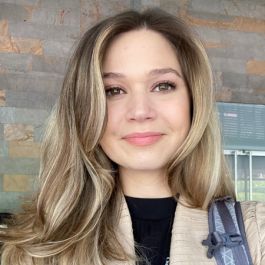In July 2022, Marvel Studios continued its decade-long dominance at the box office with the release of Thor: Love and Thunder. A $26-billion machinery of interconnected movies, TV shows and theme park attractions, the Marvel Cinematic Universe is an entertainment juggernaut that ushered in a superhero zeitgeist unprecedented in scale and ambition.
But days and weeks after the premiere, worrying reports from social media and entertainment outlets surfaced as Marvel’s VFX artists spoke out against stressful work conditions, limited resources and punishing deadlines at Avenger’s HQ. While shareholders and consumers basked in the fandom’s super-powered growth, creative talent languished behind the scenes.
Creative burnout — driven by increasing demands and exacerbated by the pandemic — is hardly new, especially in the bullish tech industry. According to ISACA’s Tech Workforce 2020 report, 64 percent of tech workers experience burnout. But some companies are filling in the cracks that might fracture creative teams in fast-paced environments. Discourse around sustainable scaling often occurs on a department or company-wide level, but UX design teams require more unique support in their processes, whether it’s a seat at the strategy table, customized feedback support or novel learning opportunities.
Grocery delivery service Instacart, which saw its design team grow by 200 percent in the last six months, workshopped ideas as a group to give its designers a voice. “Your primary role as a leader is to build the structure by which the team can think of their own ideas and execute them together,” said Adey Salyards, the company’s senior design manager, e-commerce.
The gradual, often-unseen roots of chronic stress reach into far corners of many companies, ensnaring designers and other creatives that are stretched thin and aren’t given space to cultivate artistic expression. A recent survey from design publication It’s Nice That showed 75 percent of their respondents reporting overtime work.
Elisabeth Miles, product design manager at Cisco Meraki, saw success in fostering holistic well-being for her team as a safeguard against stress symptoms, such as giving them autonomy with a new product design methodology and investing in boot camps. “I believe it is important to create an environment where everyone feels emotionally safe and supported.”
As tech companies expand, workloads scale accordingly. To keep designers from compromising on creative endeavors, Built In SF sat down with design leaders from Instacart and Cisco Meraki to see how they ensure that processes, resources and room to grow are keeping pace accordingly with their burgeoning design teams.
Instacart is an online grocery delivery service. With presence in over 13,000 cities and 75,000 stores, it is one of the leading platforms of its kind. In fact, the company is preparing for an upcoming initial public offering as a result of recent revenue growth. For its design team, the goal is to retain their creative culture even while scaling. “Scaling a design process requires buy-in from the team, and the only way to garner that level of commitment is to give every person a voice in the process,” said Adey Salyards, senior design manager for e-commerce.
How fast was your team or workload growing when you realized you had to scale your design process?
I lead the e-commerce design team at Instacart, which is responsible for a significant portion of software in the Instacart Platform. Over the past six months, our product design team has grown 200 percent. These new designers ignited the team with their energy, and we knew we’d need to build out new processes to make sure they could start contributing on day one.
What processes, tools or methodologies helped you scale your UX design process?
If you’re a designer, I’m sure your mind went to the same place ours did: a classic sticky note ideation session. Instacart has a generous team jam policy that allows teams to travel and meet up in person, so we chose Washington D.C. as our host city and gathered together for a week of fun and ideation. In addition to prioritizing time for connection and fun, we ran a workshop that explored two topics: pain points today and ideas to improve things.
Instacart’s Jam Policy Results
- Introduce granular critiques
- Identify specific parts of the design process to improve
- Build a fun committee
When the team was small, we had two hour-long critiques per week that any designer on the team could sign up for. When the team grew, we found that we were quickly running out of available critique slots and adding a third critique seemed unwieldy. To solve this, we separated out the critiques to be team-specific, so a smaller number of designers attend and they are more aware of the project context. Then we introduced a new group-level critique that is intended to act as a design leadership review and a way for designers from the other teams to stay aware of what each other is working on. We’re working with our product partners now to scale this same approach to the product review forum.
The design process in any organization can also always be improved. The challenge is finding the most critical part that needs fixing and focusing on that exclusively. In our case, the team identified that improving the kickoff process at the beginning of a project — and the handoff process between design and engineering at the end of a project — were the most critical. The team decided to tackle this by crafting example artifacts of what a good kickoff deck looks like. For handoff, they co-created a checklist with engineering and product to ensure alignment on the definition of done.
Lastly, we had several people on our team who had a knack for finding ways for the team to have fun together. We have a monthly hangout where we play games together, find fun ways to celebrate holidays together and celebrate each other’s birthdays, weddings, work anniversaries and more. This takes time and effort, but it shouldn’t be overlooked. Team camaraderie is the secret ingredient to a great design process.
What tips would you offer a UX design leader who wants to ensure their team members still have the freedom to experiment and be creative as the process scales?
It’s valuable to bring your own ideas into the mix alongside those from your team. In our case, we found that using the objective and key results (OKR) framework worked best. I synthesized the output from our team’s workshop and worked with my managers to create a set of objectives. Then we shared this list with the broader team and asked each of them to sign up for the ones they felt passionate about. Once the working group was formed, they created key results for the objective they were responsible for, along with dates for when each KR would be completed. This allowed for a healthy balance between top-down guidance and bottom-up innovation.
Each working group felt confident that they had built-in leadership alignment on their projects and the go-ahead to think creatively, as long as they felt their key results would make progress towards the objective. Lastly, we built in a process to keep ourselves accountable for completing the work. Every two weeks, we took part in our weekly team meeting to review our progress.
For managers, it can be easy to treat this as side-of-desk work and minimize the effort required to do these types of tasks well. We adopted the approach that these types of projects should fit in alongside roadmap commitments and healthy personal-life boundaries. But we also chose to treat them like real work, with deadlines and success measures.
Cisco Meraki is an IT company that offers cloud-managed networking products and platform, from Wi-Fi and routing to smart cameras and sensors. With its focus on software management for its hardware offerings, the company’s design philosophy is undoubtedly important for its clients’ digital experience. Perhaps equally so is sustaining the UX team during growth, where creative vision may become lost in the process. “As we grew, we expanded our methodologies for collaborative work,” said Product Design Manager Elisabeth Miles.
How fast was your team or workload growing when you realized you had to scale your design process?
When I joined our small UX team, led by Mary Piontkowski, our director of engineering, we were trying to tackle a massive product portfolio. In order to make a big impact on the user experience, we needed to grow our team, establish a clear UX vision and develop an engagement model that aligned with engineering and product management. To accomplish these goals, we expanded our team, partnered with other departments and implemented a design system to ensure consistency and efficiency.
Through these efforts and with the support of our partners, we were able to achieve more innovation, expertise and creative problem-solving than we could have on our own. We developed more accessible, user-friendly products and a cohesive experience across the board. We also spread awareness about our new initiatives and processes across Meraki to ensure alignment. By partnering with product management, engineering and other subject matter experts, we were able to define and establish the ideal user experience for Meraki products. This work inspired our new design system, Magnetic, which is transforming the look and feel of the Meraki dashboard.
What processes, tools or methodologies helped you scale your UX design process?
One area of focus was broadening our design thinking and workshopping by investing in team-wide training and boot camps. These programs were so popular that our cross-functional partners enrolled in the training as well. This investment was important because it provided teams the necessary tools to collaborate effectively and innovatively.
Additionally, we ensured that UX designers would have a strategic seat at the table by enabling them to participate in both discovery and delivery work. We implemented dual-track agile, a product design methodology that helps designers fully engage in all aspects of the design process. In doing so, our team was able to improve user-centered outcomes and deliver more value to the customer.
Giving team members permission to be curious, explore, take risks and make mistakes is really valuable.”
What tips would you offer a UX design leader who wants to ensure their team members still have the freedom to experiment and be creative as the process scales?
First, I would suggest asking what my team needs. Then, I would provide the tools and resources necessary to empower team members to do their best work. Giving team members permission to be curious, explore, take risks and make mistakes is really valuable. Finally, I would encourage leaders to provide opportunities for their team to exchange ideas, collaborate and celebrate their work.









